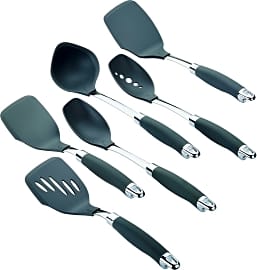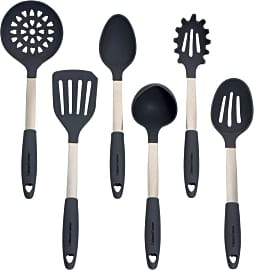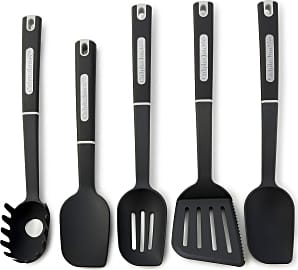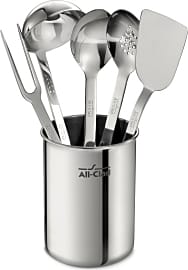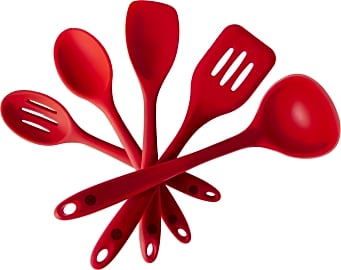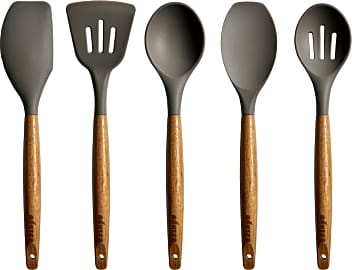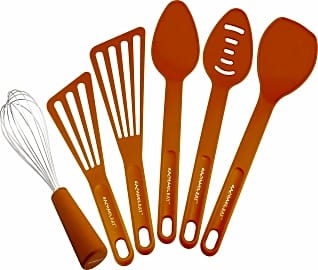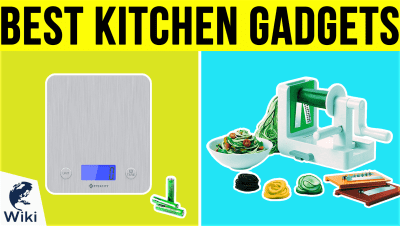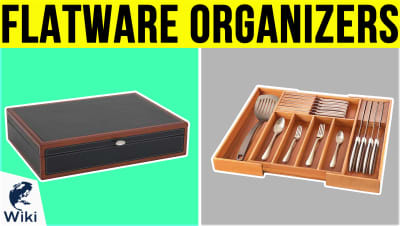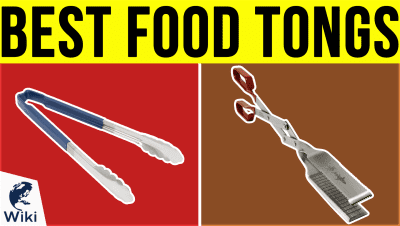The 10 Best Cooking Utensils

This wiki has been updated 37 times since it was first published in October of 2015. You can get most of the gear you need to have your kitchen up and running in a single purchase with one of these diverse sets of cooking utensils. They come in a variety of options to meet any budget, and include all the basics plus various handy additional tools, too. We've found something for everyone, no matter whether you prefer stainless steel, nylon, wood, or silicone. When users buy our independently chosen editorial recommendations, we may earn commissions to help fund the Wiki.
Editor's Notes
June 25, 2021:
The only update this time around was replacing our previous #1 from Oxo with the updated Oxo Good Grips Everyday kit. Instead of 14, it's complete with 18 tools, each of which should be durable to last a lifetime with reasonable care. The KitchenAid Gadget Set is still our favorite budget-friendly option thanks to its wide selection. If you only need cooking spoons and spatulas, the Anolon SureGrip 6-Piece Set is an ultra-premium set that you should keep an eye on. If you don't use any sensitive nonstick pans, the All Clad Silver is as heavyweight and high-end as they come.
January 16, 2020:
Coming on board in this update is the Anolon SureGrip 6-Piece Set, which brings you six commonly needed tools: three spatulas, two spoons, and a ladle. One of the spoons and one of the ladles are slotted, which comes in handy when you’re removing meatballs from a pot of sauce or chicken pieces from a hot pot of water. They’re made with durable nylon tips and soft, comfortable grips in your choice of bronze, gray, or black colors. If you’re looking for an attractive set that can be hung on a wall rack, this is a good choice, as each piece has an attractive, polished end with a handy hanging hole. This selection replaces the Vremi Nonstick, the handles of which many people find too bulky and awkward to hold.
For an all-inclusive set that comes with all the basics, look to the Oxo Good Grips Everyday. It makes a great housewarming or wedding gift, as each of the 14 handy tools is a true kitchen necessity, including 12-inch tongs, flexible and square turners, solid and slotted spoons, a grater, a swivel peeler, an ice cream scoop, potato masher, can opener, whisk, spatula, meat tenderizer, and pizza wheel. What’s more, you’ll also get a countertop holder – with a removable drip tray – that all of it fits in nicely. Each tool is safe for non-stick surfaces and heat resistant up to 400 degrees.
If you’re in the process of stocking your kitchen, you might also want to peruse our lists of best kitchen gadgets, best knife sets, and best flatware organizers.
Special Honors
Art and Cook Thingamajigs These handy tools will give you everything you’ll need to flip, scoop, stir, or drain your food. Included are a slotted turner, solid spoon, slotted spoon, spaghetti server, skimmer, and ladle, and all components are BPA free with a silicone coating over a nylon core. They’re available in blue or purple jewel tones or a set that incorporates a variety of colors. They won’t scratch your cookware and are conveniently top-rack dishwasher safe. artandcook.com
Martha Stewart Essentials 7-Piece Set Made exclusively for Macy’s, these essential tools can help you conquer every recipe that comes your way. You’ll get a slotted turner, a pasta fork, a ladle, a whisk, a solid spoon, a slotted spoon, and a handy stand to hold everything. Made from stainless steel, the utensils are top-rack dishwasher safe. macys.com
Essential Utensils For Every Home Cook
If you make soups and stews on a regular basis, you'll definitely want a ladle for serving them.
Whether you're new to cooking or you've been at it for years, it can be easy to get sucked into the world of kitchen gadgets. If there's some small process that you've ever been marginally annoyed by, like peeling garlic, taking the stems off of strawberries, or even cutting up a hot dog, someone has invented a device to do it for you. But most of these contraptions are gimmicky and unnecessary. For most everyday cooking tasks, you really only need a handful of good-quality utensils.
Spoons and spatulas are two of the utensils you'll find yourself reaching for the most often, so make sure you choose them wisely. You want something that's comfortable to hold, and it's a good idea to get them in different materials that are suited to different jobs. For example, wooden spoons are excellent for everyday stirring and sautéing, and a bendy silicone spatula is indispensable when it comes to scraping the last bit of sauce or batter from the inside of a pan. Slotted spoons are also very useful for serving vegetables and other dishes from which you need to drain excess liquid.
A good pair of tongs is one of the most versatile utensils you'll ever own. They're great for turning foods, and unlike forks, they won't pierce your steak or pork chop and allow all that precious juice to flood out. They can also be used for stir frying and tossing salads, and they make it easy to flip foods in the oven without having to remove the tray.
If you like to bake, a whisk is essential for mixing up batters. But it's also great for scrambling eggs, emulsifying dressings, stirring flour into gravies and pan sauces, making homemade whipped cream, and even mashing avocados for guacamole.
There are also a few utensils that you probably won't use everyday, but will want to have around nonetheless. If you make soups and stews on a regular basis, you'll definitely want a ladle for serving them. A handheld mesh skimmer makes it easy to sift small amounts of flour or powdered sugar, remove debris from the top of homemade stocks, or even rinse rice and herbs. Many utensil sets come with a pasta server, which may seem superfluous, but if you've ever tried to scoop up spaghetti or linguini with a spoon, you can probably see where it can come in handy.
Choosing The Right Utensils For Your Pots And Pans
When you're deciding on which set of kitchen utensils to buy, you need to take your cookware into consideration.
And if you have a hodgepodge of differently-shaped pots and pans, there are even special spoons that have one rounded side and one straight side.
For nonstick pots and pans, a delicate touch is necessary. Teflon and other nonstick coatings are easy to scratch, and using metal utensils is just tempting fate. Once the coating is damaged, it starts to peel and lose its nonstick properties. That's why it's best to stick with wooden, silicone, and nylon utensils, which are much more gentle.
Stainless steel, aluminum, and cast iron are much more durable than nonstick surfaces, so they can handle a bit more abuse. You can use metal utensils with a light hand, but try not to apply too much pressure as they can scratch. Copper pans are a bit tricky. If they have a copper interior, you'll need to stick with softer utensils, but some models are lined with stainless steel, which can stand up to metal spoons and spatulas.
The shape of your cookware can also determine what type of utensil is best to use. If your pan has rounded edges, a spoon or spatula with a round head can be better at getting into the nooks and crannies. But if it has straight sides, you may want to opt for more rectangular-shaped utensils. And if you have a hodgepodge of differently-shaped pots and pans, there are even special spoons that have one rounded side and one straight side.
A Brief History Of Kitchen Utensils
Modern-day spatulas, whisks, and tongs may be relatively recent inventions, but spoons have been around since prehistoric times. Paleolithic cultures used shells and chips of wood as eating utensils, and ancient Egyptians carved religious symbols into their spoons made of ivory, flint, and slate. Before the 1700s, only wealthy families were able to afford utensils made of precious metals. They were such a big deal that people actually carried their own personal spoons around with them, and the quality of a person's spoon was somewhat of a status symbol.
They were such a big deal that people actually carried their own personal spoons around with them, and the quality of a person's spoon was somewhat of a status symbol.
Forks, on the other hand, have only been commonly used as eating utensils for a few centuries. In ancient Egypt, Greece, and Rome, they were used for lifting and carving meats, but most cultures used their hands and a knife for eating. During the Middle Ages, the Church actually banned forks for being immoral because courtesans were often seen using them to eat desserts.
Forks started to become popular in Italy in the 1400s, and Catherine de Medici introduced them to France in 1533 when she arrived to marry Henry II. In 1608, an English traveler named Thomas Coryate published the story of his trip through France, Italy, Switzerland, and Germany, where forks were commonly used, and was ridiculed by his friends for using them himself, but it wasn't long after that the fork gained acceptance in England. It would take the American colonies nearly 250 years to follow suit.
But what about the spork? Surprisingly, utensils very similar to the spork, including a device called the ice cream fork, date back to the late 19th century. The first patent was filed in 1874, though it was a few decades before the name was coined. Early sporks were made of metal and could be quite ornate, but today, they're almost always made of plastic. You're most likely to find them in fast food restaurants, schools, prisons, and the military, but they're also used by Boy Scouts and other outdoorsmen who are looking to pack as light as possible.



